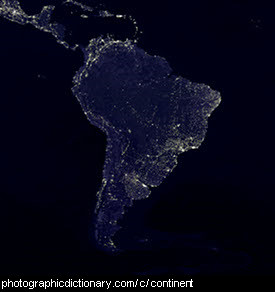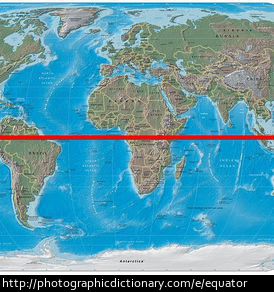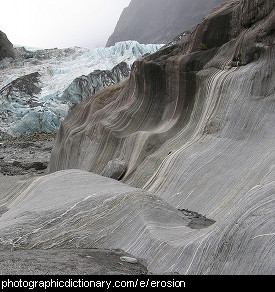A continent is a very large mass of land surrounded by ocean. There are seven continents: Europe, Asia, Africa, North America, South America, Australia and Antarctica.
A crater is a large, circular hole in the ground that could have been caused by several different things. Craters can be many kilometers wide and very deep.
Craters are found on top of volcanoes, and they can be caused by meteors hitting the Earth. They are sometimes caused when the ground collapses above a large underground chamber like an old mine or a cave.
Eis forEnvironment
The equator is an imaginary line drawn around the earth that is equally distant from the north and south poles, dividing the earth into hemispheres.
Erosion is the process by which something becomes eroded. Something is eroded by being worn away slowly over time, usually from the action of wind or running water. Even the hardest rock can slowly become eroded.
Erosion is a problem if it happens too fast, for example when trees and plants are removed by people and then all the good soil is washed away because there is nothing holding it together anymore.
A glacier is a very large amount of ice that is slowly moving. The ice comes from fallen snow in an area that is so cold the snow just keeps building up faster than it melts away. There is an enormous amount of fresh water frozen inside glaciers, which are found all over the world except Australia.
Because glaciers move and are so big and hard, they can change the landscape as they move. The ice from the glaciers eventually ends up in the sea.














